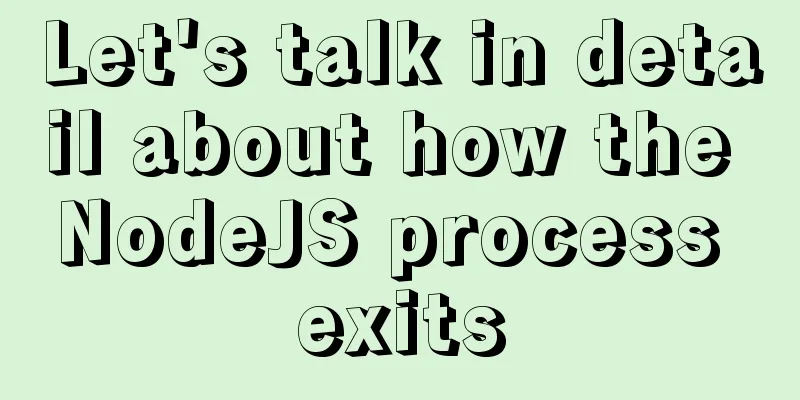A brief analysis of the function calling process under the ARM architecture

1. Background knowledge1. Introduction to ARM64 registers
2. Detailed explanation of STP instruction (ARMV8 manual)
Let's first look at the instruction format (64bit) and the impact of instructions on the execution results of the register machine.
Type 1, STP <Xt1>, <Xt2>, [<Xn|SP>],#<imm> Store Xt1 and Xt2 in the address memory corresponding to Xn|SP, and then change the address of Xn|SP to the new address of Xn|SP + imm offset Type 2, STP <Xt1>, <Xt2>, [<Xn|SP>, #<imm>]! Store Xt1 and Xt2 in the address memory corresponding to the address of Xn|SP plus imm, and then change the address of Xn|SP to the new address after the offset of Xn|SP + imm Type 3, STP <Xt1>, <Xt2>, [<Xn|SP>{, #<imm>}] Store Xt1 and Xt2 in the address memory corresponding to the address of Xn|SP plus imm There are three types of opcodes in the manual, and we will only discuss the last two involved in the program. The pseudocode is as follows:
Shared decode for all encodings
integer n = UInt(Rn);
integer t = UInt(Rt);
integer t2 = UInt(Rt2);
if L:opc<0> == '01' || opc == '11' then UNDEFINED;
integer scale = 2 + UInt(opc<1>);
integer datasize = 8 << scale;
bits(64) offset = LSL(SignExtend(imm7, 64), scale);
boolean tag_checked = wback || n != 31;
Operation for all encodings
bits(64) address;
bits(datasize) data1;
bits(datasize) data2;
constant integer dbytes = datasize DIV 8;
boolean rt_unknown = FALSE;
if HaveMTEExt() then
SetNotTagCheckedInstruction(!tag_checked);
if wback && (t == n || t2 == n) && n != 31 then
Constraint c = ConstrainUnpredictable();
assert c IN {Constraint_NONE, Constraint_UNKNOWN, Constraint_UNDEF, Constraint_NOP};
case c of
when Constraint_NONE rt_unknown = FALSE; // value stored is pre-writeback
when Constraint_UNKNOWN rt_unknown = TRUE; // value stored is UNKNOWN
when Constraint_UNDEF UNDEFINED;
when Constraint_NOP EndOfInstruction();
if n == 31 then
CheckSPAlignment();
address = SP[];
else
address = X[n];
if !postindex then
address = address + offset;
if rt_unknown && t == n then
data1 = bits(datasize) UNKNOWN;
else
data1 = X[t];
if rt_unknown && t2 == n then
data2 = bits(datasize) UNKNOWN;
else
data2 = X[t2];
Mem[address, dbytes, AccType_NORMAL] = data1;
Mem[address+dbytes, dbytes, AccType_NORMAL] = data2;
if wback then
if postindex then
address = address + offset;
if n == 31 then
SP[] = address;
else
X[n] = address;The red part corresponds to the key logic of stack pushing. For the meaning of other assembly instructions, please refer to the armv8 manual or Baidu. 2. An exampleNow that we are familiar with the above parts, let's look at an example: The C code is as follows:
The disassembly of several related functions is as follows (there are usually only two instructions related to stack push): main\f3\f4\strlen
After running through gdb, we can see that the strlen will trigger SEGFAULT, causing the process to hang
After the above code is compiled, there is no strip, so the elf file has symbols Check the running status (info register): pay attention to the four registers $29, $30, SP, and PC
A core idea: the CPU executes instructions rather than C code, and function calls and returns are actually the process of pushing and popping the thread stack. Next, let's see how the above call relationship works in the current task stack:
The relationship between function calls in the stack (call function pushes the stack, the address decreases; return pops the stack, the address increases):
The following is the process of pushing the stack (emphasis) Let’s look back at the previous compilation: main\f3\f4\strlen
Starting from the current sp, frame 0 is strlen, and the stack is not opened, so the calling function of the previous level is still x30, so it can be deduced that frame 1 calls f3
The starting entry assembly of function f3: (gdb) x/2i f3 0x400600 <f3>: stp x29, x30, [sp,#-48]! 0x400604 <f3+4>: mov x29, sp It can be seen that the stack space opened by the f3 function is 48 bytes. Therefore, the top of the stack of frame2 is the current sp + 48 bytes: 0xfffffffff2c0 (gdb) x/gx 0xfffffffff2c0+8 0xfffffffff2c8: 0x000000000040065c (gdb) x/i 0x000000000040065c 0x40065c <f4+36>: mov w0, #0x0 // #0 The function of frame2 is sp+8: 0x000000000040065c -> <f4+36> Continue to push back the function of frame1 from sp = 0xfffffffff2c0 The starting entry assembly of function f4 is: (gdb) x/2i f4 0x400638 <f4>: stp x29, x30, [sp,#-48]! 0x40063c <f4+4>: mov x29, sp It can be seen that the stack space opened by the f4 function is also 48 bytes. Therefore, the top of the stack of frame3 is the current 0xfffffffff2c0 + 48 bytes: 0xfffffffff2f0 The function of frame2 is 0xffffffff2c0 + 8: 0x000000000040065c -> <f4+36> (gdb) x/gx 0xfffffffff2f0+8 0xfffffffff2f8: 0x0000000000400684 (gdb) x/i 0x0000000000400684 0x400684 <main+28>: mov w0, #0x0 // #0 Therefore, the function of frame3 is the main function, and the top of the stack corresponding to the main function is 0xfffffffff320 This concludes the derivation (those who are interested can continue the derivation and see how libc starts main) Summarize: The key to push stack:
3. Practical explanationThe following core is available at the scene: As you can see, all symbols cannot be found. Even after loading the symbol table, it still does not work and the actual call stack cannot be parsed. (gdb) bt #0 0x0000ffffaeb067bc in ?? () from /lib64/libc.so.6 #1 0x0000aaaad15cf000 in ?? () Backtrace stopped: previous frame inner to this frame (corrupt stack?) First look at the info register, pay attention to the values of the four registers x29, x30, sp, and pc
Derived task stack: Export the sp content first: The figure below actually shows the result. Let’s describe in detail how to derive it.
pc represents the currently executed function instruction. If the current instruction is not opened, generally x30 represents the next instruction of the previous frame calling the current function. Looking at the assembly, it can be reversed into the following function (gdb) x/i 0xaaaacd3de4fc 0xaaaacd3de4fc <PGXCNodeConnStr(char const*, int, char const*, char const*, char const*, char const*, int, char const*)+108>: mov x27, x0 After finding the top function of the stack, check the stack operation of the function: (gdb) x/6i PGXCNodeConnStr 0xaaaacd3de490 <PGXCNodeConnStr(char const*, int, char const*, char const*, char const*, char const*, int, char const*)>: sub sp, sp, #0xd0 0xaaaacd3de494 <PGXCNodeConnStr(char const*, int, char const*, char const*, char const*, char const*, int, char const*)+4>: stp x29, x30, [sp,#80] 0xaaaacd3de498 <PGXCNodeConnStr(char const*, int, char const*, char const*, char const*, char const*, int, char const*)+8>: add x29, sp, #0x50 It can be seen that the previous frame exists at the current sp + 0xd0 - 0x80, which is 0xfffec4cebd40 + 0xd0 - 0x80 = 0xfffec4cebd90, and the bottom of the stack is at 0xfffec4cebd40 + 0xd0 = 0xfffec4cebe10
Therefore, we find the top of the stack corresponding to the next level frame and the LR return instruction of the previous level. By reversing, we can get the function build_node_conn_str (gdb) x/i 0x0000aaaacd414e08 0xaaaacd414e08 <build_node_conn_str(Oid, DatabasePool*)+224>: mov x21, x0 Repeating the above derivation, we can see that the function build_node_conn_str opens a 176-byte stack. (gdb) x/4i build_node_conn_str 0xaaaacd414d28 <build_node_conn_str(Oid, DatabasePool*)>: stp x29, x30, [sp,#-176]! 0xaaaacd414d2c <build_node_conn_str(Oid, DatabasePool*)+4>: mov x29, sp So continue with 0xfffec4cebe10 + 176 = 0xfffec4cebec0
Check the caller 0xfffec4cebe10+8 for reload_database_pools
Continue to see reload_database_pools (gdb) x/8i reload_database_pools 0xaaaacd4225e8 <reload_database_pools(PoolAgent*)>: sub sp, sp, #0x1c0 0xaaaacd4225ec <reload_database_pools(PoolAgent*)+4>: adrp x5, 0xaaaad15cf000 0xaaaacd4225f0 <reload_database_pools(PoolAgent*)+8>: adrp x3, 0xaaaacf0ed000 0xaaaacd4225f4 <reload_database_pools(PoolAgent*)+12>: adrp x4, 0xaaaaceeed000 <_ZN4llvm18ConvertUTF8toUTF16EPPKhS1_PPtS3_NS_15ConversionFlagsE> 0xaaaacd4225f8 <reload_database_pools(PoolAgent*)+16>: add x3, x3, #0x9e0 0xaaaacd4225fc <reload_database_pools(PoolAgent*)+20>: adrp x1, 0xaaaacf0ee000 <_ZZ25PoolManagerGetConnectionsP4ListS0_E8__func__+24> 0xaaaacd422600 <reload_database_pools(PoolAgent*)+24>: stp x29, x30, [sp,#-96]! The actual stack is opened at 0x220 bytes, so the stack bottom of this frame is 0xfffec4cebec0 + 0x220 = 0xfffec4cec0e0
Therefore, the structure of the basic calling relationship is as follows
The above is basically enough to analyze the problem, so there is no need to continue to derive TIPS: This instruction is generally used in calls under the arm architecture. stp x29, x30, [sp,#immediate]! with or without exclamation mark Therefore, each frame layer stores the stack top address and LR instruction of the previous frame layer. By accurately finding the stack top of the bottom frame 0, all call relationships can be quickly deduced (the part circled by red dashed circles). The reverse solution of the function depends on the symbol table. As long as the symbol segment of the original elf file is not stripped, the corresponding function symbol can be found (check it through readelf -S).
After finding the Frame, the content in each layer of the frame, combined with the assembly, can basically be used to deduce the process variables. The above is a brief analysis of the detailed content of the function calling process under the ARM architecture. For more information about the function calling process under the ARM architecture, please pay attention to other related articles on 123WORDPRESS.COM! You may also be interested in:
|
<<: Sample code using scss in uni-app
>>: Detailed explanation of how to use element-plus in Vue3
Recommend
Enable remote access rights for MySQL under Linux and open port 3306 in the firewall
Enable remote access rights for mysql By default,...
The content of the commonly used input text box is automatically vertically centered and the default prompt text is empty when clicked
Three functions: 1. Automatic vertical centering o...
Mini Program natively implements left-slide drawer menu
Table of contents WXS Response Event Plan A Page ...
Detailed explanation of the usage and differences of MySQL views and indexes
MySQL Views Simply put, a MySQL view is a shortcu...
Writing a web calculator using javascript
This article mainly records the effect of using j...
HTML+CSS merge table border sample code
When we add borders to table and td tags, double ...
WeChat applet implements simple calculator function
WeChat applet: Simple calculator, for your refere...
HTML hyperlinks explained in detail
Hyperlink Hyperlinks are the most frequently used ...
Example of implementing QR code scanning effects with CSS3
Online Preview https://jsrun.pro/AafKp/ First loo...
Issues installing Python3 and Pip in ubuntu in Docker
text 1) Download the Ubuntu image docker pull ubu...
Summary of several error logs about MySQL MHA setup and switching
1: masterha_check_repl replica set error replicat...
Share 20 excellent web form design cases
Sophie Hardach Clyde Quay Wharf 37 East Soapbox Rx...
How to smoothly upgrade nginx after compiling and installing nginx
After nginx is compiled and installed and used fo...
JavaScript data structure bidirectional linked list
A singly linked list can only be traversed from t...
Example analysis of the page splitting principle of MySQL clustered index
This article uses an example to illustrate the pa...




























